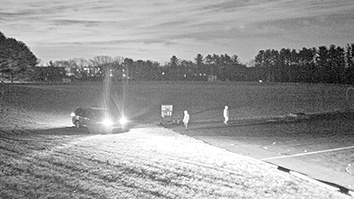Citation
Liu, B., Li, N. L., Wang, J., Shi, P.-Y., Wang, T., Miller, M. A., & Li, K. (2014). Overlapping and distinct molecular determinants dictating the antiviral activities of TRIM56 against flaviviruses and coronavirus. Journal of Virology, 88(23), 13821-13835. doi: 10.1128/JVI.02505-14
Abstract
The tripartite motif-containing (TRIM) proteins have emerged as a new class of host antiviral restriction factors, with several demonstrating roles in regulating innate antiviral responses. Of >70 known TRIMs, TRIM56 inhibits replication of bovine viral diarrhea virus, a ruminant pestivirus of the family Flaviviridae, but has no appreciable effect on vesicular stomatitis virus (VSV), a rhabdovirus. Yet the antiviral spectrum of TRIM56 remains undefined. In particular, how TRIM56 impacts human-pathogenic viruses is unknown. Also unclear are the molecular determinants governing the antiviral activities of TRIM56. Herein, we show that TRIM56 poses a barrier to infections by yellow fever virus (YFV), dengue virus serotype 2 (DENV2), and human coronavirus virus (HCoV) OC43 but not encephalomyocarditis virus (EMCV). Moreover, by engineering cell lines conditionally expressing various TRIM56 mutants, we demonstrated that TRIM56’s antiflavivirus effects required both the E3 ligase activity that lies in the N-terminal RING domain and the integrity of its C-terminal portion, while the restriction of HCoV-OC43 relied upon the TRIM56 E3 ligase activity alone. Furthermore, TRIM56 was revealed to impair YFV and DENV2 propagation by suppressing intracellular viral RNA accumulation but to compromise HCoV-OC43 infection at a later step in the viral life cycle, suggesting that distinct TRIM56 domains accommodate differing antiviral mechanisms. Altogether, TRIM56 is a versatile antiviral host factor that confers resistance to YFV, DENV2, and HCoV-OC43 through overlapping and distinct molecular determinants.


